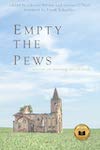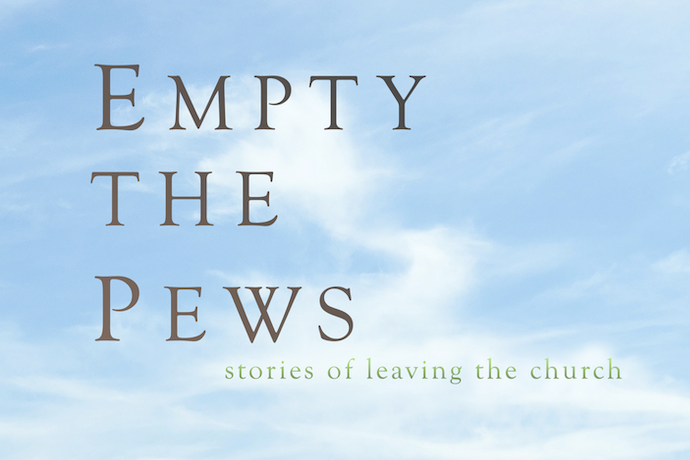In 2020, the rise of the so-called religious “Nones”—those who claim no religious affiliation—has evolved from a story of interest to a small niche of readers into an entire genre on the religion beat. While the term None has some usefulness as a blanket descriptor, we are beginning to understand that most individual stories about religious disaffiliation are far more complicated than just checking “none of the above” on a survey. Stories about the decline in Gen Z, Millennial and Gen X believers are a regular feature in secular news—Religion News Service even publishes an entire column dedicated to statistical data on Nones, compiled by the sociologist Ryan Burge—and a growing number of books exploring the narrative stories of Nones have appeared in recent years, including a book of my own.

Empty the Pews: Stories of Leaving the Church
Chrissy Stroop and Lauren O’Neal
Epiphany Publishing
November 29, 2019
What many of these articles and books share in common is a sense of confusion or despair. The primary question they ask is often framed in the same way: people are leaving organized religion, so what can churches do to get them back? or, if it’s an election year, how will this religious disaffiliation affect their vote? Rarely do those who study religious disaffiliation ask the more difficult kinds of questions that are likely to yield more complex answers: Why did you leave? What did this do to your family? Where did it lead you, spiritually and psychologically? As researcher Andreea Nica noted here on RD in 2018:
Leaving fundamentalist, strict religions can have negative health consequences, both perceived and actual, that manifest in the body and mind. Research shows that individuals who come out to family members, specifically as an atheist… report that families often react with anger and rejection, as communication deteriorates and distrust grows.
For those who grow up in authoritarian or fundamentalist Christian families, the difficult questions can’t be answered by checking a box on a survey, which is likely why RD contributor Chrissy Stroop and journalist Lauren O’Neal decided to compile an anthology of essays by exvangelicals, former Catholics, and others who have moved out of institutional Christianity and into the liminal spaces where Nones are usually grouped. As they write in the introduction, when they met, they discovered they had both moved away from the worst aspects of Christianity, what they called “the repression, the shame, [and] the hypocrisy,” due to the realization that many church teachings were “actively harmful.”
While a few contributors to Empty the Pews acknowledge that their post-institutional faith is still a work in progress, for the most part these writers have departed religion without much in the way of regret. More than a few of the essays share a narrative arc which likely reveals something about what happens when a person is liberated from the rigid nature of a religion with an extremely limited world view. These often begin with the person remembering the breaking-point moment, then explain how the individual was brought up in a family with strict religious beliefs, followed by a description of the person’s post-faith life. This is certainly not to say that these stories aren’t important or moving, it’s simply to point out that those looking for patterns in the stories of Nones or post-religious adults might look closely at why such similarities exist.
Many of the contributors are queer, which reflects the damage—or “nurtured insanity,” as Frank Schaeffer calls it in his foreword—fundamentalist Christianity has done to queer people just based on the number who have left. But it also demonstrates why Christian denominations that trot out their “welcoming and affirming” credentials may need to do more; they may want to spend some serious time listening to new members who have arrived from a fundamentalist background. While there’s doubtlessly a great deal of sincerity in those denominations, the issue for a queer person, as evidenced by this book, is that the pain Christianity has caused them will take more than a rainbow banner or a “welcome” sign to address.
All of which leads us to the question I asked myself several times while reading the book: who is the intended audience? I suspect Stroop and O’Neal want other exvangelicals and Nones to find some consolation in knowing they’re not alone. That’s an important thing to understand, and a big reason why Stroop’s #EmptyThePews and Blake Chastain’s #exvangelical hashtags went as viral as they did. But clergy, who stand to benefit most from this book, might not be as likely to pick it up based on the title alone. And that’s a shame, because there are some narratives of suffering and resurrection here that would be familiar to anyone who’s read the gospels.
Ultimately, like any anthology, what a person takes from this book will be based on which essays most resonate. Science-fiction writer Carmen Maria Machado’s essay “A Girl’s Guide to Sexual Purity” is a powerhouse that will impact anyone who’s experienced religious misogyny, while Lyz Lenz’s “Cottonwood Creek” is a moving requiem for a doomed marriage and way of life. Other contributors, including Stroop and O’Neal themselves, offer similarly important reflections on the kinds of pain and trauma uncovered by researchers like Andreea Nica. By dividing the book into sections about queerness, family, trauma, mission trips, and intellectual evolutions, the editors have given readers a kind of map that will be helpful in guiding them to the essays that, perhaps, best reflect their own story or set of interests.
But I do hope that religious leaders will pick up this book, if only because, after my own book on Nones came out, so many of them have contacted me asking questions about what Nones think or feel. The fact that they approach me rather than reach out to Nones themselves is telling, but it’s also another reason why Empty the Pews would be so useful to them. And the title should not, in fact, be off-putting. The pews are emptying, like it or not. Instead of looking for explanations in statistics or demographics, perhaps it’s finally time to listen to the voices of those who have left them.


